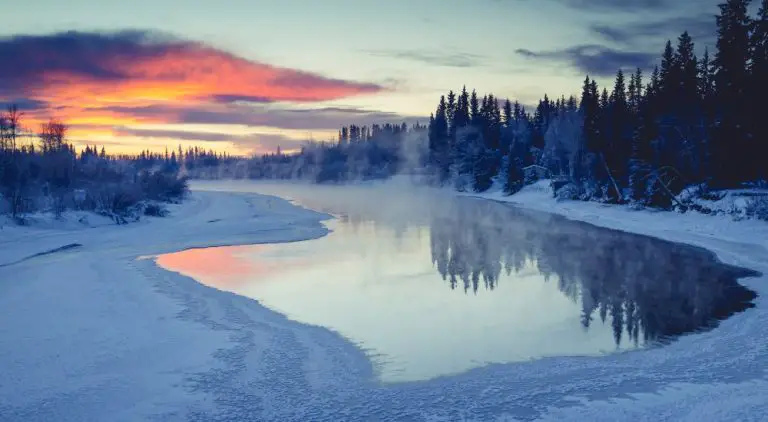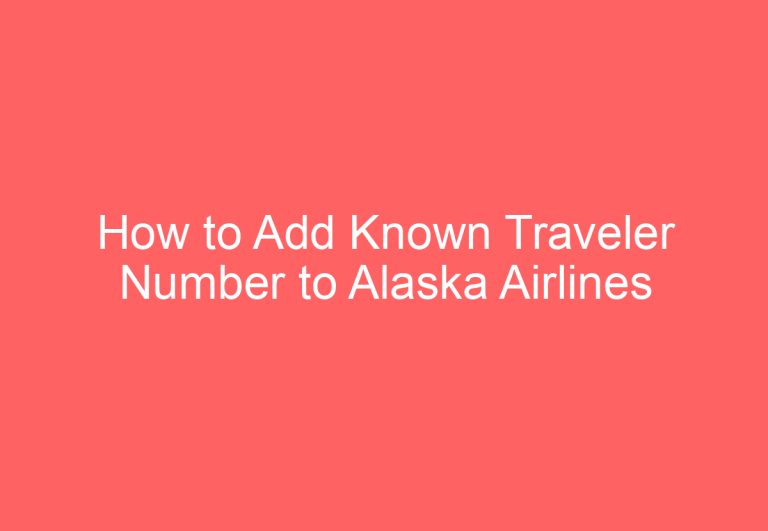Why Isn’t Alaska Part of Canada? Exploring the Historical and Political Factors
Alaska has been a part of the United States for over a century, but many people wonder why it is not a part of Canada instead. The answer to this question lies in a series of historical events, treaties, and disputes that spanned over a century. While Alaska is physically closer to Canada than the United States, it is not a part of Canada due to a number of factors.

One of the main reasons why Alaska is not a part of Canada is because the United States purchased the territory from Russia in 1867. At the time, Russia was looking to sell Alaska due to financial difficulties, and the United States saw an opportunity to expand its territory. The purchase price of $7.2 million was considered a bargain, as it gave the United States access to a vast amount of land and resources.
Another reason why Alaska is not a part of Canada is because of the historical relationship between Russia and Great Britain. At the time of the sale, Great Britain controlled Canada, and Russia did not want to sell Alaska to a country that was seen as a rival. Instead, Russia chose to sell Alaska to the United States, which was seen as a neutral party. This decision helped to maintain the balance of power in the region and prevented a potential conflict between Russia and Great Britain.
Historical Context

Russian Colonization and Sale to the U.S.
The history of Alaska’s ownership is a complex one, with several factors contributing to its current status as part of the United States. In the 18th and 19th centuries, Russia established a colony in Alaska, primarily for the purpose of fur trading. The colony was centered around Fort Ross, which was located on the coast of what is now California.
In 1867, the Russian Empire sold Alaska to the United States for $7.2 million. The sale was part of a larger effort by Russia to divest itself of its overseas colonies, which it could no longer afford to maintain. The purchase was made by William Seward, the U.S. Secretary of State, who saw Alaska as a valuable addition to the United States.
International Treaties and Boundaries
The sale of Alaska to the United States was not without controversy. At the time, the British Empire controlled Canada, and there were concerns that the sale of Alaska would give the United States too much power in the region. These concerns were addressed in the Anglo-Russian Convention of 1825, which established the boundary between Alaska and British Columbia.
However, the boundary was not clearly defined, and disputes arose over the years. One of the most significant of these disputes was the border dispute between the United States and Canada over the Portland Channel, which was resolved by an arbitration tribunal in 1903.
Economic Factors and the Gold Rush
Another factor that contributed to Alaska’s status as part of the United States was the Klondike Gold Rush of the late 19th century. The gold rush brought thousands of prospectors to the Yukon, which is located just across the border from Alaska. Many of these prospectors traveled through Alaska on their way to the gold fields, and Alaska became an important hub for transportation and supplies.
The gold rush also brought economic benefits to Alaska, as many of the prospectors purchased supplies and equipment in Alaska before continuing on to the Yukon. This economic activity helped to solidify Alaska’s ties to the United States and made it more difficult for Canada to claim the territory.
Overall, the historical context surrounding Alaska’s ownership is a complex one, with several factors contributing to its status as part of the United States. While the sale of Alaska to the United States was controversial at the time, it ultimately proved to be a valuable addition to the United States and helped to solidify its presence in the region.
Geopolitical and Cultural Significance

Alaska’s Role in North American Geography
Alaska is the largest state in the United States of America and is located on the northwest edge of the North American continent. The state is separated from the rest of the United States by Canada, and it borders the Pacific Ocean to the west. Alaska’s geography is dominated by mountains and glaciers, and it is home to the Northern Lights, which are a major tourist attraction. The state’s location also makes it an important strategic location for the United States.
Economic and Natural Resources
Alaska is known for its abundant natural resources, including oil, gas, and minerals. The state’s economy is heavily dependent on these resources, and they have played a significant role in shaping Alaska’s history. The discovery of oil in Alaska in the 1960s led to a period of economic growth and development. Today, Alaska is one of the largest oil-producing states in the United States.
Alaska and Canada’s Modern Relationship
Although Alaska is not part of Canada, the two countries share a close relationship. The boundary dispute between the United States and Canada was resolved in 1903, and the two countries have since enjoyed a peaceful and cooperative relationship. Alaska and Canada share many cultural and economic ties, and they work together on a variety of issues, including environmental protection and resource management.
Overall, Alaska’s unique geography, abundant natural resources, and strategic location have made it an important part of North America’s history and development. While it is not part of Canada, Alaska’s relationship with its northern neighbor is an important part of its story.
Frequently Asked Questions

How did Alaska become a part of the United States?
Alaska was purchased by the United States from Russia in 1867 for $7.2 million. The purchase was made during the presidency of Andrew Johnson and the US Secretary of State at the time, William Seward, was the main negotiator of the deal. The purchase was initially met with criticism and ridicule, with many people calling it “Seward’s Folly” or “Seward’s Icebox”. However, the discovery of gold in Alaska in the late 1800s and early 1900s led to a surge in immigration and economic growth, which eventually proved the value of the purchase.
What historical events led to the US purchasing Alaska instead of Canada?
The purchase of Alaska by the United States was made after a series of failed attempts by the British to purchase the territory from Russia. The British had previously offered to buy Alaska from Russia in 1852, but the offer was rejected. After the US Civil War, Russia was looking to sell Alaska to raise funds and approached the United States with an offer. The United States saw the purchase as an opportunity to expand its territory and prevent the British from gaining control of the region.
Who controlled Alaska before it was transferred to the United States?
Alaska was controlled by Russia before it was transferred to the United States. Russian explorers first arrived in Alaska in the mid-1700s and established a trading post in the Aleutian Islands. Over time, the Russians expanded their control over the region and established settlements along the coast. The Russian presence in Alaska was limited, however, and the territory was largely undeveloped.
What geographical features delineate the boundary between Alaska and Canada?
The boundary between Alaska and Canada is delineated by a series of mountain ranges and rivers. The boundary begins at the coast of the Arctic Ocean and follows the 141st meridian west until it reaches the summit of Mount St. Elias. From there, the boundary follows the crest of the Saint Elias Mountains to the 141st meridian again. The boundary then follows the 141st meridian to the intersection with the 60th parallel, which forms the southern boundary of Alaska.
What were the reasons behind Russia’s decision to sell Alaska to the US?
Russia’s decision to sell Alaska to the United States was motivated by several factors. The Russian government was facing financial difficulties and was looking to raise funds. The Russian presence in Alaska was also limited, and the territory was seen as a liability rather than an asset. Additionally, the Russian government was concerned about the possibility of the British gaining control of the region, and saw the sale to the United States as a way to prevent this from happening.
Has there been any significant movement or proposal for Alaska to join Canada?
There have been no significant movements or proposals for Alaska to join Canada. While some Alaskans have expressed interest in joining Canada, the idea has not gained widespread support. The relationship between the United States and Canada is generally positive, and there is little incentive for Alaska to secede from the United States and join Canada.






